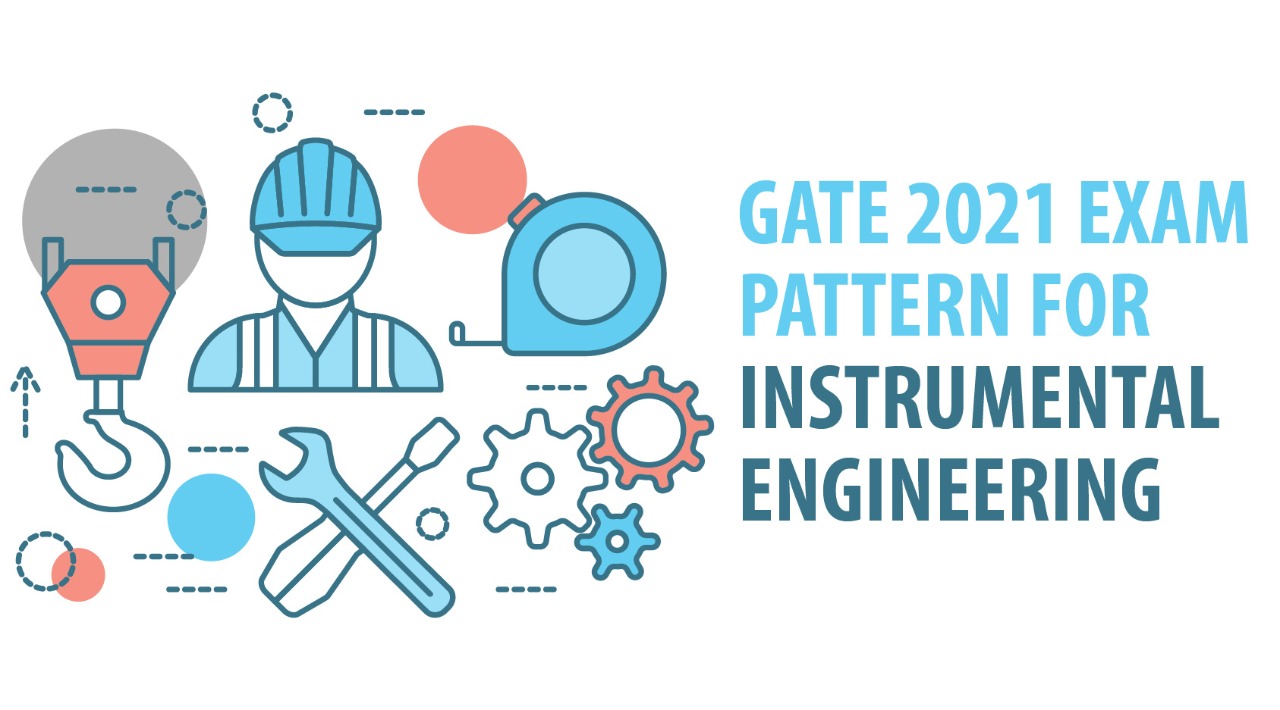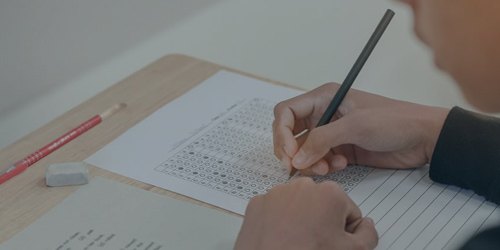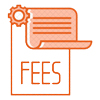The conducting body of GATE 2021, IIT Bombay has released the official notification regarding the revised syllabus at their official website @iitb.ac.in. The candidates, who will successfully qualify for the exam, can take admission in M.Tech courses in various reputed institutions like IITs, NITs, etc., and also can go for several PSUs recruitments.
GATE 2021 Instrumentation Engineering Syllabus has 10 major sections that are based on the principle and operation of measuring instruments used in several fields like design, the configuration of automated systems, etc. The GATE 2021 Examination paper will be divided into 3 sections such as General Aptitude, Engineering Mathematics, and core subject. GATE 2021 Instrumentation engineering paper will be held on 6th Feb 2021 (Saturday) from 9:30 AM to 12:30 PM.

Highlights:
| S.No | Particulars | Details |
|---|---|---|
| 1 | Mode of Exam | Computer-Based Examination |
| 2 | Types of Questions | Two types of questions will be asked: Multiple Choice Questions (MCQ) Numerical Answer Key (NAT) Questions |
| 3 | Number of Questions | 65 Questions |
| 4 | Total Marks | 100 Marks |
| 5 | Sections | There will be three sections in the paper of GATE 2021 Instrumentation Engineering General Aptitude Engineering Mathematics Instrumentation Engineering section |
| 6 | General Aptitude Section | The General Aptitude section will be mandatory and will consist of 10 questions. 5 of the questions will be of 1 mark and the remaining will be of 2 marks. The total marks of the section will be 15 marks. |
| 7 | Marking Scheme | For 1 Mark MCQs - ? mark will be deducted for every wrong answer. For 2 Mark MCQs - ? mark will be deducted for every wrong answer. Unattempted questions will be given zero marks There will be no negative marking |
Details of GATE 2021 Instrumentation Engineering Exam Pattern:
- Time Duration: GATE 2021 Instrumentation Engineering will be a 3-hour long computer-based test that will be conducted on 6th February 2021.
- The exam will be conducted in the English language only. There will be no other language option available.
- The candidates will have to answer questions carrying a total of 100 marks and the total number of questions is 65.
- There will be three types of questions that will appear in the exam including MCQ, MSQ, and Numerical Answer Type (NAT) Questions. There will be a General Aptitude section that all the candidates have to attempt. It will have 10 questions out of which 5 questions carry a weightage of 1 mark while the other 5 will be of 2 marks.
- In MCQs, questions will have four choices, out of which, one or more than one choice(s) are correct.
- Number of Sections: There will be three sections in the question paper including:
- General aptitude
- Engineering Mathematics
- The subject selected by the candidates (Instrumentation Engineering)
GATE Syllabus of Instrumentation Engineering
Here is the detailed syllabus for the GATE 2021 Instrumentation Engineering:
Section 1: Engineering Mathematics
- Linear Algebra, Calculus, Differential equations, Analysis of complex variables, Probability, and Statistics, Numerical Methods.
Section 2: Electricity and Magnetism
- Coulomb's Law, Electric Field Intensity, Electric Flux Density, Gauss's Law, Divergence, Electric field and potential due to point, line, plane, and spherical charge distributions, Effect of the dielectric medium, Capacitance of simple configurations, Biot?Savart’s law, Ampere’s law, Curl, Faraday’s law, Lorentz force, Inductance,
- Magnetomotive force, Reluctance, Magnetic circuits, Self and Mutual inductance of simple configurations.
Section 3: Electrical Circuits and Machines
- Voltage and current sources: independent, dependent, ideal, and practical; v-i relationships of resistor, inductor, mutual inductance, and capacitor; transient analysis of RLC circuits with dc excitation.
- Kirchoff’s laws, mesh and nodal analysis, superposition, Thevenin, Norton, maximum power transfer, and reciprocity theorems.
- Peak-, average- and RMS values of ac quantities; apparent-, active- and reactive powers; phasor analysis, impedance, and admittance; series and parallel resonance, locus diagrams, the realization of basic filters with R, L, and C elements. transient analysis of RLC circuits with ac excitation.
- One-port and two-port networks, driving point impedance and admittance, open-, and short circuit parameters.
- Single-phase transformer: equivalent circuit, phasor diagram, open circuit, and short circuit tests, regulation and efficiency; Three-phase induction motors: the principle of operation, types, performance, torque-speed characteristics, no-load and blocked rotor tests, equivalent circuit, starting and speed control; Types of losses and efficiency calculations of electric machines.
Section 4: Signals and Systems
- Periodic, aperiodic, and impulse signals; Laplace, Fourier, and z-transforms; transfer function, the frequency response of first and second-order linear time-invariant systems, the impulse response of systems; convolution, correlation. Discrete-time system: impulse response, frequency response, pulse transfer function; DFT and FFT; basics of IIR and FIR filters.
Section 5: Control Systems
- Feedback principles, signal flow graphs, transient response, steady-state-errors, Bode plot, phase and gain margins, Routh and Nyquist criteria, root loci, design of lead, lag and lead-lag compensators, state-space representation of systems; time-delay systems; mechanical, hydraulic, and pneumatic system components, synchro pair, servo and stepper motors, servo valves; on-off, P, P-I, P-I-D, cascade, feedforward, and ratio controllers.
Section 6: Analog Electronics
- Characteristics and applications of the diode, Zener diode, BJT and MOSFET; small-signal analysis of transistor circuits, feedback amplifiers. Characteristics of operational amplifiers; applications of opamps: difference amplifier, adder, subtractor, integrator, differentiator, instrumentation amplifier, precision rectifier, active filters, and other circuits. Oscillators, signal generators, voltage-controlled oscillators, and phase-locked loop.
Section 7: Digital Electronics
- Combinational logic circuits, minimization of Boolean functions. IC families: TTL and CMOS. Arithmetic circuits, comparators, Schmitt trigger, multi-vibrators, sequential circuits, flipflops, shift registers, timers, and counters; sample-and-hold circuit, multiplexer, analog-to-digital (successive approximation, integrating, flash and sigma-delta) and digital-to-analog converters (weighted R, R-2R ladder and current steering logic). Characteristics of ADC and DAC
Section 8: Measurements
- SI units, systematic and random errors in measurement, expression of uncertainty - accuracy and precision index, propagation of errors. PMMC, MI and dynamometer type instruments; dc potentiometer; bridges for measurement of R, L, and C, Q-meter. Measurement of voltage, current, and power in single and three-phase circuits; ac and dc current probes; true RMS meters, voltage and current scaling, instrument transformers, timer/counter, time, phase and frequency measurements, digital voltmeter, digital multimeter; oscilloscope, shielding, and grounding.
Section 9: Sensors and Industrial Instrumentation
- Resistive-, capacitive-, inductive-, piezoelectric-, Hall effect sensors and associated signal conditioning circuits; transducers for industrial instrumentation: displacement (linear and angular), velocity, acceleration, force, torque, vibration, shock, pressure (including low pressure), flow (differential pressure, variable area, electromagnetic, ultrasonic, turbine, and open channel flow meters) temperature (thermocouple, bolometer, RTD (3/4 wire), thermistor, pyrometer, and semiconductor); liquid level, pH, conductivity and viscosity measurement.
Section 10: Communication and Optical Instrumentation
- Amplitude- and frequency modulation and demodulation; Shannon's sampling theorem, pulse code modulation; frequency and time division multiplexing, amplitude-, phase-, frequency-, pulse shift keying for digital modulation; optical sources and detectors: LED, laser, photo-diode, light-dependent resistor, and their characteristics; interferometer: applications in metrology; basics of fiber optic sensing.
GATE Subject-wise Weightage for Instrumentation Engineering
Weightage analysis for each subject is very much important for GATE to prepare effectively. Along with the GATE syllabus for Instrumentation Engineering, aspirants also need to follow the GATE exam weightage pattern to know the marks added to each topic and score more in the GATE Instrumentation exam.
The table below will help you to understand the GATE Instrumentation Subject-wise:
| SUBJECTS | GATE 2016 | GATE 2017 | GATE 2018 | GATE 2019 | GATE 2020 |
|---|---|---|---|---|---|
| Engineering Mathematics | 14% | 10% | 14% | 10% | 15% |
| Network Theory | 9% | 11% | 9% | 8% | 8% |
| Signals & Systems | 6% | 11% | 8% | 8% | 8% |
| Control Systems | 9% | 8% | 8% | 14% | 13% |
| Analog Electronics | 10% | 13% | 12% | 11% | 9% |
| Digital Circuits | 12% | 4% | 9% | 8% | 8% |
| Measurements | 8% | 10% | 10% | 5% | 12% |
| Transducers | 7% | 10% | 8% | 9% | 8% |
| Optical Instrumentation | 4% | 2% | 6% | 7% | 4% |
| Process Control | 0% | 2% | 0% | 0% | 0% |
| Communication | 6% | 4% | 1% | 5% | 0% |
| General Aptitude | 15% | 15% | 15% | 15% | 15% |
Read also : Instrumentation Engineering Top Recruiters, Admission Process and Top Colleges











